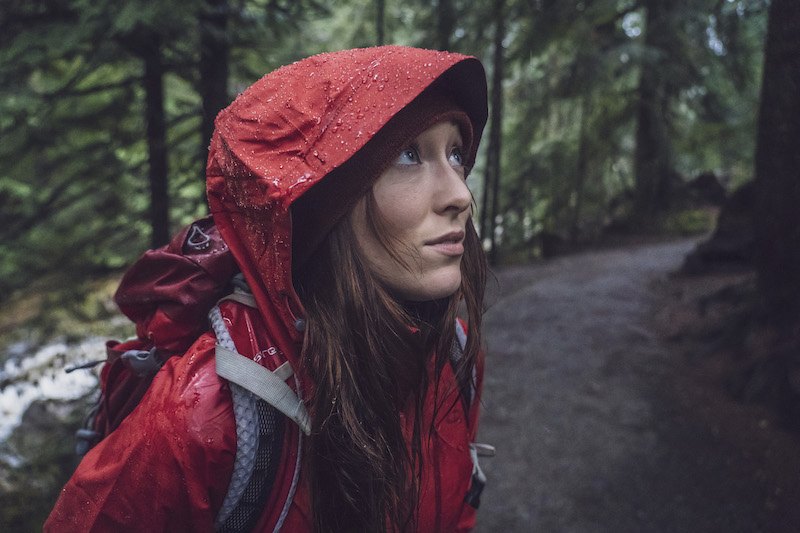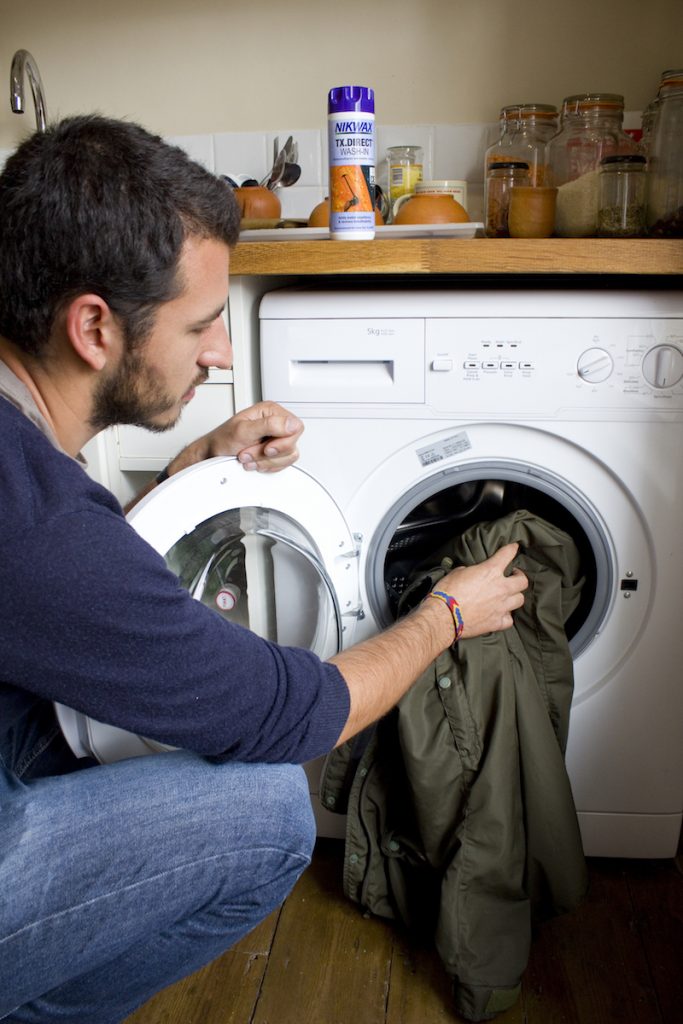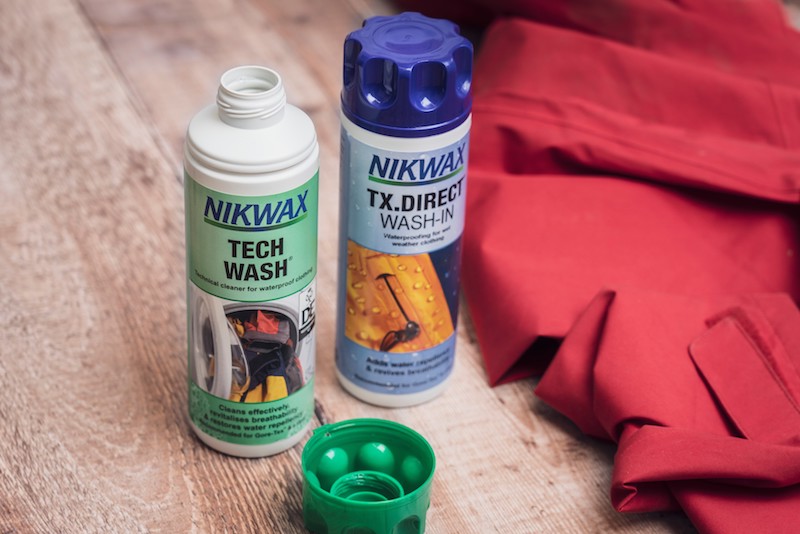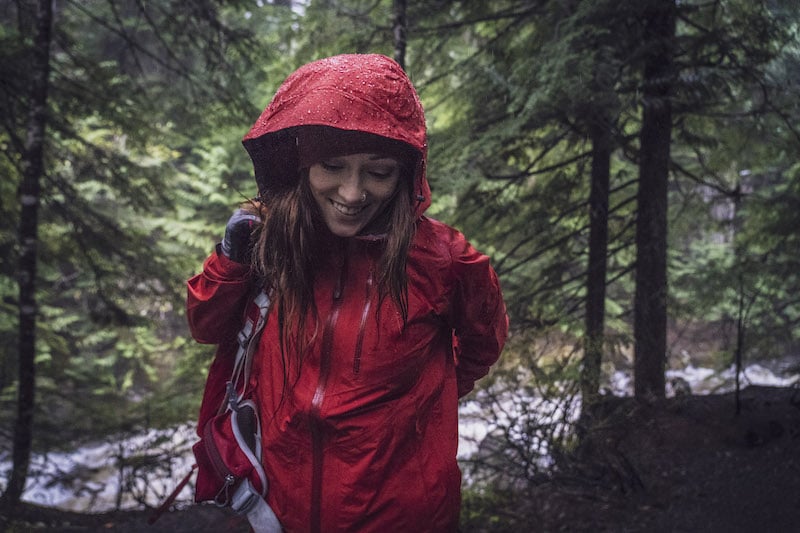One of the biggest buzz words in the outdoor gear industry is undoubtedly ‘breathability’. Manufacturers make wild claims about their garments (‘100% breathable!’ etc.) while eager store assistants drop it into their sales pitch after every breath.
It’s a word and a concept that sells technical gear, and it’s simple to understand; a breathable piece of kit will stop you from getting wet inside your jacket. It allows moisture vapour to pass through the fabric and be dispersed into the atmosphere around you. Nice.
Except it’s not that simple. There are so many things that impact the breathability of an item of clothing. I’ve lost count of the amount of times I’ve had someone tell me their jacket’s leaking only for me to discover that there’s nothing wrong with the garment; they’re just dealing with moisture build ups from sweat and a lack of breathability.

For a waterproof membrane to be breathable, a number of stars have to align. Typically, the conditions need to be cold and dry outside the garment and warm and moist inside, the fabric needs to be unhindered by other materials, like rucksack straps and maps or phones in pockets, and the fabric has to be clean, free of dirt and not saturated with water.
Essentially, if you’re climbing Mount Everest in a freshly laundered jacket, you’re in prime breathability conditions. If you’re slogging it along the West Highland Way in a dirty, well-used piece of kit, less so.
With this in mind, keeping your waterproof clothing clean and ensuring its Durable Water Repellent (DWR) coating is topped up (to help prevent the fabric from absorbing rain) should be a key consideration if you’re looking to maximise the performance of your outdoor kit.
We spoke to Nikwax, the world leader in safe, high performance waterproofing, cleaning and conditioning for outdoor gear, to discover more about how using technical detergents to wash and reproof your garments can help ensure breathability over their lifetime.
Top up that DWR coating
Remember when you first got your waterproof jacket and rain just beaded up on its surface and rolled off, almost as if there was some magical forcefield protecting the fabric?
That was all down to the DWR coating doing its job. This repellent, which is applied as a coating during the manufacturing process, helps prevent the outer layer of a jacket from wetting out, that is, getting saturated with water.
Why is this something that you want to avoid? Well, first and foremost, if your jacket’s fabric is absorbing and getting saturated with water, it’s going to make you far colder and much more uncomfortable wearing it. But secondly, a saturated jacket is going to be far, far less breathable than one that’s not.

Nikwax says, “If the outer fabric absorbs water, the garment can lose up to 70% of its breathability. Therefore, the DWR coating on the outer fabric of your jacket must be maintained to ensure comfort”.
Essentially, if the fabric is clogged with water, there’s no way for moisture vapour to pass from the inside to the outside, leaving you moist and soggy.
Fortunately, a good DWR coating will do a grand job of preventing fabrics from wetting out in all but the worst, sustained downpours. But they do lose their effectiveness over time.
Dirt can ruin a DWR (and if you’re hiking outdoors, chances are your jacket’s picking up dust, mud and other dirt), while washing a jacket and using standard detergents can also degrade a garment’s DWR coating. As luck would have it, there are specialist products that are readily available that will help you reproof your garments.
So, to keep your technical clothing performing as it was designed to, you’ll need to know how and when to top up its DWR coating.

When should you reproof a waterproof jacket?
Generally speaking, it’s good practice to treat your waterproof outdoor clothing once a year to ensure its DWR is up to its job. That said, there are certain, obvious signs of a degrading DWR coating that you should look out for.
Condensation forming on the inside of your jacket is one, and an obvious reduction in breathability is another (check if your base and mid layer is getting wet). Perhaps the biggest tell though, is your jackets ability to shed water on its outer surface. If it’s regularly and quickly wetting out, it’s time to re proof.
How to reproof a waterproof jacket
Fortunately, topping up a jacket’s DWR coating (and maintaining its performance) is a pretty simple task thanks to technical washing products. Nikwax has been producing them for over 40 years now, and the company’s current range is set up to make reproofing, cleaning and looking after your waterproof clothing as easy as possible.
While the brand’s range is extensive and covers all sorts of fabrics and uses, there are two that will ensure you can keep your waterproofs performing like new: Tech Wash and TX.Direct.

Nikwax Tech Wash is an easy to use, safe, high performance cleaner for wet weather clothing and equipment, and it’s best used when regularly washing your gear as it will clean the fabric while revitalising its DWR coating (standard household detergents won’t do this).
Simply stick your item of clothing in your washing machine with the recommended amount of Tech Wash and let the machine do the work (you can also apply Tech Wash by hand).
Nikwax TX.Direct goes a bit further. It doesn’t just revitalise the DWR, it adds a new coating upon washing, reproofing your gear. This is best used if your kit has been thoroughly worn since its last wash. TX.Direct is easy to apply in a washing machine, and the DWR develops on air drying, so it’s dead simple to use.



